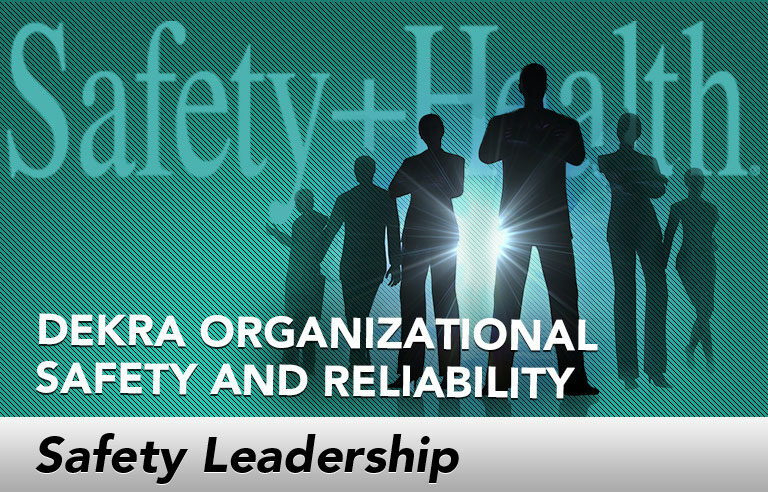Safety Leadership: Seeing is suspect: What am I missing here?

Editor’s Note: Achieving and sustaining an injury-free workplace demands strong leadership. In this monthly column, experts from global consulting firm DEKRA Organizational Safety and Reliability share their point of view on what leaders need to know to guide their organizations to safety excellence.
One critical line of defense in both organizational and process safety systems is an employee’s ability to detect and respond appropriately to workplace hazards. In fact, effective hazard recognition typically is the first step in an organization’s approach to reducing risks and optimizing operational reliability and safety.
A significant part of this person-dependent detection and subsequent response process involves the human vision system. However, what if the human vision system itself is a hazard within the workplace? What if the human brain, in fact, generates hazards that we haven’t addressed within our hazard control systems? Accurate, consistent and sustainable hazard recognition and situational awareness can be achieved only by first understanding the brain-centered hazard: Seeing is suspect.
Understanding how the human vision system works is crucial to understanding the human brain, because half of our brains are devoted to vision detection, interpretation and response. Despite the fact that so much of our brains are devoted to seeing, there’s no guarantee that we see correctly, so it’s important to note the following limitations:
- Contrary to popular belief, our eyes don’t work like video cameras, recording everything in their path and sending that data to our brains. Rather, neuroscientists have confirmed the brain directs the eyes on what to look at, what to watch out for, and how broadly and deeply (in how much detail) to notice our external environment. So, at any given moment, what we see relies less on the light streaming into our eyes, and more on what’s already inside our heads. For this reason, if you’re driving and are hungry, you’ll notice the signs for restaurants, but may not see all the cars passing you on the road or even your exit sign.
- Because individuals vary in terms of what they perceive to be a hazard or what’s important to them, we may selectively attend to different stimuli in our environment. This means that we cannot guarantee each individual will see the same information that is before his or her eyes.
- There are three types of “blindness” that humans can experience:
- Familiarity blindness, which is the brain’s desensitization to visual information. This typically involves information that is regularly in its line of sight (e.g., exit signs on a highway).
- Change blindness, which is the brain’s struggle to detect subtle and sometimes substantial visual changes (e.g., the changing conditions on a piece of machinery).
- Inattention blindness, which is the brain’s inability to process additional information when focused on a specific task, thus causing you to miss a fully visible item.
For these reasons, it’s no wonder we miss information such as content within an email, information posted on a wall or objects right before our eyes with some degree of regularity.
So, what can be done to address these limitations of the human vision system? How can you ensure individuals are truly guided to safe decision-making?
Although individuals need to be taught how to address the “seeing is suspect” brain-centered hazard by learning to see and perceive exposures more broadly and deeply, the following questions can serve as helpful prompts to engage the slow brain (conscious attention and thought):
- In what tasks or situations do you tend to rely on just the “gist” without seeking full details, or have failed to see important visual details right in front of you?
- In which of your critical tasks – ones that could lead to an injury or incident – could this happen?
- What hazards do I need to hunt for and manage for this task?
- What are the warning signs that something has changed that I will watch for to maintain my safety?
Questions encourage thinking and prevent us from operating in the fast brain (habits/non-conscious). Questions will ignite intention and attention in the slow brain and encourage people to really see, think about and understand what is going on in their situational field at work. So, the next time you think you’ve noticed everything within your situational field, ask yourself, “What am I missing here?”
This article represents the views of the authors and should not be construed as a National Safety Council endorsement.
 Rajni Walia, PhD, is a principal consultant for DEKRA Organizational Safety and Reliability. For over a
decade, she has been leading performance management, organizational assessment and development,
and human error reduction consultations with a focus on fostering strong performance reliability.
Rajni Walia, PhD, is a principal consultant for DEKRA Organizational Safety and Reliability. For over a
decade, she has been leading performance management, organizational assessment and development,
and human error reduction consultations with a focus on fostering strong performance reliability.
Direct to your inbox: Sign up to be notified in email about new "Safety Leadership" columns.
Post a comment to this article
Safety+Health welcomes comments that promote respectful dialogue. Please stay on topic. Comments that contain personal attacks, profanity or abusive language – or those aggressively promoting products or services – will be removed. We reserve the right to determine which comments violate our comment policy. (Anonymous comments are welcome; merely skip the “name” field in the comment box. An email address is required but will not be included with your comment.)

